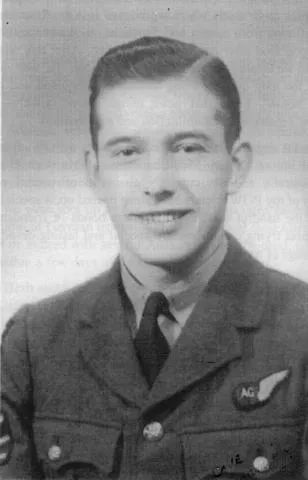Dunn landed in his parachute near the eastern part of Bredballe town, and hid the parachute and swimming jacket. He then started walking in a westerly direction. On 13/9 Dunn was arrested by a Danish policeman in Grejsdalen at 14:00 hours. He was handed over to the Germans, and sent to Germany the following day. After interrogation in Dulag Luft, he was sent to Stalag Luft VI Heydekrug and later to Stalag 357 Thorn. He returned to England after the war.AirWar over Denmark
( R,J.Dunn's rank was Sergeant. His Service Number R/51852 is not recognized in "Aircrew Remembered" The Service Number J/38640 is recognized in ACR and indicates a subsequent promotion but the commissioned rank is unconfirmed)




